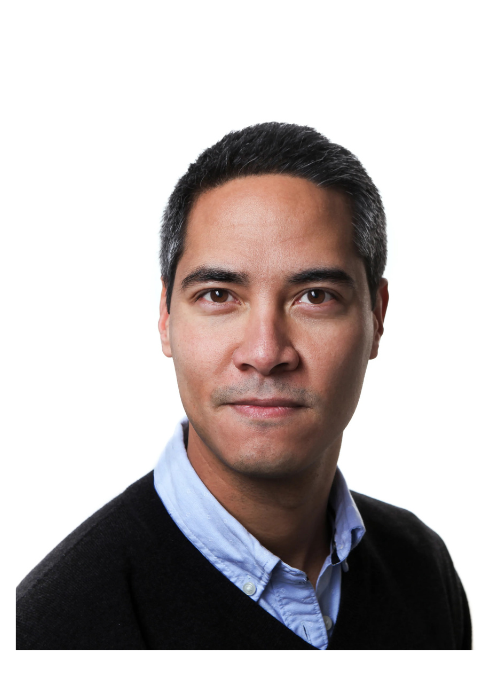An interview with Martin Wing-King, Vice President and General Manager, Site Head at Quotient Sciences – Reading

Over the last three decades, Quotient Sciences has established a reputation for efficiently accelerating to first-in-human (FIH) clinical trials through capabilities to provide integrated drug product and clinical pharmacology expertise.
In this article, Martin Wing-King, Vice President and General Manager, Site Head at Quotient Sciences - Reading, discusses the demand for accelerated pathways to first-in-human (FiH) trials, the team's experience and capabilities offered on-site at Reading.
Martin discusses how recent equipment additions in Reading give greater flexibility for drug product manufacturing across indications and patient populations, including pediatrics drug programs, orphan drugs for rare diseases, and psychedelics drug programs. He also highlights how Reading collaborates with Quotient Sciences facilities in the UK and US to offer holistic drug program support for customers across the globe.
As part of our strategy to build Reading as a center of excellence for drug products within our global network, this year we are completing the installation and commissioning of an additional Xcelodose model 600s and a 3P Innovation model R1000 robotic capsule filler.

What is driving the demand for accelerated pathways to first-in-human (FiH) trials, and what are some typical challenges faced in early development?
It is well-known that developing a new drug is a long and complex process. Very few compounds make it to a licensed medicine, sometimes taking between 10 and 15 years. At any point, a new product could be rejected due to safety, effectiveness, or quality.
Considering how the time and costs add up along the way, failure in first-in-human studies (FIH) could mean a significant setback. The enormous time and cost savings are evident if we can help our clients de-risk at this stage. Quotient Sciences has played a pivotal role in helping our customers accelerate into FIH trials, attributed largely to Translational Pharmaceutics®, a platform we have been leveraging for over 16 years. This platform enables us to obtain clinical data more rapidly, leading to a significant reduction in early development time and cost.
Early data can be crucial in determining whether the molecule should be developed further, instilling a sense of optimism about potential outcomes, or in a worst-case scenario, allow the client to “fail fast” and move on to another program or go back to an earlier formulation or candidate if necessary. We know this is true for all customers but especially for small and midsize biotechs that may have one compound in their pipeline at the present time. They want to ensure that the clinical data is going to tell them what is working and what is not in case they need to pivot to get a more marketable formulation.
Could you share background about Quotient Sciences – Reading and its capabilities?
Quotient Sciences - Reading was established over 25 years ago as Pharmaterials Ltd. and was acquired in 2017, creating the company that Quotient Sciences is today. The Reading site was established with teams that had deep experience in the material science behind APIs. With this foundational understanding of drug substance, we added formulation development and manufacturing capabilities.
Our teams have always strived to understand the physical properties of APIs before commencing formulation development and manufacturing—and still do—so we can be successful as we scale drug product manufacturing without having to worry about drug substance issues. Today, the Reading site offers a wide range of capabilities, including solid oral dose, liquid, and inhalation dosage forms.
Tell us about your role at Quotient Sciences. What brought you to join the company?
I have been with the Reading, UK site for just over 16 years, including two years and counting as the facility’s site head. I was part of the commercial team at the time that Pharmaterials Ltd. was acquired. Before the acquisition, the legacy companies would compete in the early development space. I was always curious about Translational Pharmaceutics® and the combined CDMO and CRO capabilities at Nottingham. The due diligence during the acquisition showed great synergies between the two companies and the journey that we were about to embark upon.
In my current role as Vice President and General Manager, Site Head, I am accountable for ensuring that we deliver on our targets set for the facility safely, compliantly, and efficiently, and in a financially-responsible way. As one of Quotient Sciences’ subject matter experts, I also help ensure that we have the right capabilities to deliver project scopes. Prior to this, I was in the project management department for almost five years and ten years in business development roles.
What changes are being made at Reading to available equipment?
As part of our strategy to build Reading as a center of excellence for drug products within our global network, this year we are completing the installation and commissioning of an additional Xcelodose model 600s and a 3P Innovation model R1000 robotic capsule filler.
A Fill2Weight capsule filling machine from 3P Innovation will be installed in Q3 2024. This is a versatile robotic capsule-filling machine that can fill powder with challenging properties, such as spray-dried powders and poor-flowing APIs, whilst avoiding powder compaction. The Fill2Weight system fills to a target weight rather than dispenses a fixed volume. This allows for compensation to changes in capsule weights and powder properties. The machine also has “recipe cards” that can be used where the fill weight and API properties are typed into the machine and the machine can take over from there.
Having access to a variety of equipment under one roof means that we can develop and manufacture the required product even faster for our customers. These pieces of equipment sit alongside the existing Xcelodose that we already have on-site, and a Harro Höfliger ‐ Modu-C LS machine, which doses powder using a vacuum drum system.
What are some of the featured departments at Quotient Sciences – Reading?
The project management team is at the heart of all the customer projects at the site, and Project managers (PMs) are the face of Quotient Sciences to the customer. They work with the customer from the very start of a project to the end and coordinate with all aspects of the business, from operational teams to finance and business development, on the delivery of a program. Kirsty Webster is currently the Head of Project Management for Quotient Sciences—Reading.
Our development team, led by Mihaela Totolici, consists of scientists who use their expertise in dosage form design to create high-quality, safe, and effective drug delivery systems. Applying technical expertise while prioritizing client needs enables the team to collaborate effectively and make significant contributions to developing marketable molecules.
The analytical teams, led by Laura Willis and George Williams, are responsible for the analytical testing of the drug product dosage forms we develop and manufacture to ensure they meet the required specifications. The department utilizes advanced instrumentation to perform the required analysis in accordance with Good Manufacturing Practice (GMP) standards.
Having access to a variety of equipment under one roof means that we can develop and manufacture the required product even faster for our customers.
How does the team at Reading work alongside other sites in Quotient Sciences’ network?
Within Quotient Sciences, we have added capabilities for drug substance synthesis and manufacturing, along with related services like bioanalysis and 14C drug substance radiolabeling, through the acquisition of our Alnwick, UK facility, formerly Arcinova, in 2021.
Another differentiator that we have built as a company over the last two decades is direct access to Phase I clinics with our facilities in Miami, FL, and Nottingham, UK. This helps to remove hand-overs that add time to the drug programs we are working on; tech transfer time and cost can be reduced, and for the most part eliminated, by combining CRO and CDMO capabilities within one organization.
Finally, when a drug is scaled up further downstream, we can do the Phase III work and larger-scale commercial batches in Philadelphia, PA, where we have two facilities.
In the next part of this two-part series, Martin discusses the company’s approach to formulation development, explaining the approach to “simple” as well as “complex” dosage forms, and how the Company is enabling pediatric and rare disease indication needs.
